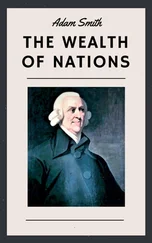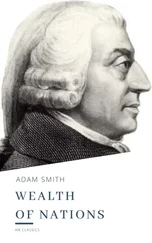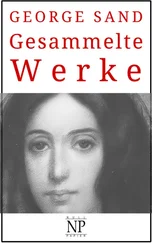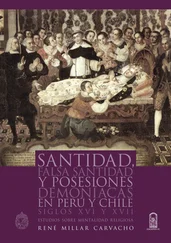Thomas Reid (1710–96), who succeeded Smith at Glasgow when he left for the tour with the Duke of Buccleuch, was the founder of the ‘common sense’ school of philosophy and a critic of some aspects of the work of Hume and Smith. Reid, like Ferguson, was also a Minister of the Kirk and shows the intimate relationships that existed between the various institutions of Scotland at the time. Another prime example of this is Hugh Blair (1718–1800), who was Minister of the High Kirk of St Giles in Edinburgh, and perhaps the most famous pulpit orator of his generation, while also holding the post of Professor of Rhetoric and Belles Lettres at Edinburgh University, a position which is often regarded as the first university chair in English Literature. Before his appointment to Edinburgh, Blair succeeded Smith in giving the public lectures on rhetoric in the city and closely followed Smith’s model for a modern rhetorical education.
William Robertson (1721–93) also maintained a parallel career as Kirk Minister and Edinburgh Professor. He was a Professor and later the Principal of Edinburgh University, the leader of the Moderate faction in the General Assembly of the Church of Scotland, Moderator of the Kirk, and Historiographer Royal for Scotland. The Moderate faction within the Kirk was the main political manifestation of the Scottish Enlightenment. Under Robertson’s leadership, the literati were able to advance their Enlightenment project in the face of opposition from the evangelical traditionalists of the Popular faction. The Moderates were active in protecting thinkers like Hume and Kames from prosecution for heresy. They were also able to place sympathetic Ministers in the most influential parishes and to promote a form of religion that was far milder than the rigid Calvinism of the traditional Kirk. The decline in the enforcement of social conformity through the Kirk was accompanied by a shift in focus from strict adherence to the literal word of the Bible to a form of teaching that stressed conscience and good moral behaviour. In a period of less than fifty years, Scotland had moved from a near theocracy where heresy was punishable by death to a more liberal society where David Hume’s heterodox views on religion were met with social disapproval rather than prosecution.
Another interesting feature of this group was their tendency to move around the Scottish universities. For example, Smith’s friend and executor Joseph Black was a Professor at Glasgow and then Edinburgh. Black’s fame rests on isolating carbon dioxide and conducting ground-breaking experiments on latent heat. The other executor of Smith’s estate, James Hutton, studied chemistry and made a fortune by perfecting the production of ammonium chloride. Hutton’s true interest was geology and he travelled around Scotland observing rock formations, eventually producing his Theory of the Earth in 1795, the first modern account of geology. Black was also a physician and acted as doctor to several of the leading members of the Scottish Enlightenment. Scotland became famous for producing some of the leading medical men of the century. John Gregory (1724–73), William Cullen (1710–90), and the brothers John (1728–93) and William Hunter (1718–83) were pioneers of modern medicine. They built the reputation of the Scottish universities as the most advanced centres of medical training in the world.
True to the interest in applying scientific knowledge, the Scottish Enlightenment also produced some of the most successful engineers of the century. James Watt (1736–1819) worked as instrument maker at the University of Glasgow while Smith was a professor there. He went on to develop the separate condenser for the Newcomen steam engine, an innovation that paved the way for the Industrial Revolution. Thomas Telford (1757–1834) was a gifted civil engineer whose work on the Caledonian Canal helped to open the Highlands to commerce and, together with the Forth and Clyde Canal, facilitated water transport in the Scottish mainland.
Smith’s childhood friends from Kirkcaldy included the architect Robert Adam (1728–92), whose Palladian style and neo-classicism dominated architecture at the time and helped to shape the most obvious physical symbol of the Scottish Enlightenment, the New Town of Edinburgh, whose Georgian elegance stands in contrast to the medieval old town. The building of the new town also involved the significant engineering feat of the draining of the Nor Loch and its replacement with Princes Street Gardens.
Adam was among the leading figures in the arts who emerged from Scotland at this time. Others include the portraitists Sir Henry Raeburn (1756–1823) and Allan Ramsay (1713–84), who painted many of the central figures of the period, the historical landscape artist Gavin Hamilton (1723–98), and the cartoonist and caricaturist John Kay, who provided amusing sketches of Edinburgh life. Two great pioneers of the English-language novel, Tobias Smollett (1721–71) and Henry MacKenzie (1745–1831), are also of note, as is a tradition of poets, including Robert Fergusson (1750–74) and Robert Burns (1759–96), who sought to preserve the Scots language and traditional songs from a fashion for Anglicization. The century also saw the foundations of fine art schools and printing presses, notably by the Foulis brothers in Glasgow.
These individuals formed a tight-knit group who met in the clubs of Edinburgh, Glasgow, and Aberdeen: clubs like the Select Society, the Poker Club, the Oyster Club, the Aberdeen Wise Club, the Glasgow Literary Society, and the Political Economy Club, where they heard papers and discussed the latest publications in philosophy and science. Many of these clubs, like the Edinburgh Society for Encouraging Arts, Sciences, Manufactures, and Agriculture, which later became the Royal Society of Edinburgh, were set up to apply scientific knowledge to practical improvement.
The latest ideas from England and Europe were absorbed and debated along with the latest Scottish ideas. The Scots corresponded with and met the leading thinkers of the time as part of a cosmopolitan intellectual environment. Enlightened visitors to Scotland such as Ireland’s Edmund Burke and America’s Benjamin Franklin (1706–90) were welcomed into a ferment of intellectual debate. Indeed, Tobias Smollett described the Scotland of this time as a hotbed of genius. Thinking about Adam Smith as moving in this context is helpful to us, as we can see the thinkers whose ideas influenced the development of his thought and those with whom he interacted in the discussion clubs of Enlightenment Scotland. Understanding Smith as a man of the Enlightenment, and particularly as a man of the Scottish Enlightenment, helps us to grasp a number of centrally important themes in his work: the most important of these being his commitment to science.
Perhaps the greatest inspiration for the Enlightenment was Sir Isaac Newton (1642–1727). Newton’s towering achievements in the natural sciences made him the template for the successful public intellectual. Voltaire heaped praise on him as supplanting the thought of René Descartes (1596–1650), and his fame became such that he was even lauded in poetry by Alexander Pope (1688–1744). Newton’s heroic status rested on his refinement of the scientific method first mooted by Francis Bacon (1561–1626). The method was grounded on the importance of observation and the generation of simple general rules of cause and effect based on the regularities observed in nature. This method avoided the error of Descartes, whose search for first principles led him to theorize beyond what the evidence supported.
Newton’s Principia Mathematica (1687) popularized a new understanding of what science was and what we could expect from it. The Newtonian, or experimental, method also had a further decisive advantage over its rivals: it provided testable predictions. French expeditions to Peru in 1735 and to Lapland in 1736 appeared to confirm Newton’s description of the shape of the earth, while the reappearance of Halley’s Comet in 1758 again demonstrated the success of his ideas. Colin Maclaurin (1698–1746) popularized Newton’s work in the Scottish universities, ensuring that the young Scots whom he taught had the opportunity to experience cutting-edge science. By the time Smith was a student, the spirit of Newtonianism had become deeply embedded in the curriculum. 4
Читать дальше












